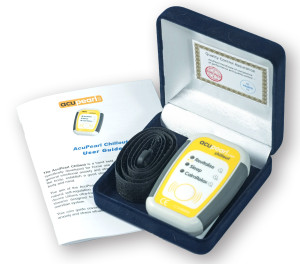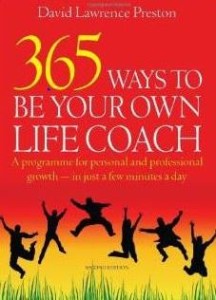This self-hypnosis routine will help you to develop a deep sense of inner calmness and confidence so you feel more appreciative towards yourself, more capable and more in control. The more you use it, the more you’ll create a deep inner feeling of peace and calmness and the better the results.
Warning
Make sure you have about twenty minutes to spare before you start, and never listen when you’re driving or operating machinery. And remember, no matter how deeply you relax, should anything happen which requires your attention, your eyes will open and you’ll instantly be fully alert.
You may amend this script if you wish to incorporate specific suggestions and creative imagery to help you with any aspect of your personal development.
Read it onto a recording device. Speak slowly and deliberately, in a monotonous tone of voice.
Make yourself very comfortable. Either sit or lie down in a comfortable position with your head and neck supported. Uncross your legs. Slacken any tight clothing or jewelry. Let your hands flop gently by your side or in your lap. Relax. Let go of all tension.
Now, without moving your head, focus your gaze on a spot on the ceiling. When your eyelids start to feel heavy, and you feel you want to shut your eyes, don’t resist, just let them close. Gently release all thoughts, cares and concerns. Allow yourself to be completely relaxed and comfortable.
Take your attention to your breath. Take a nice, deep breath. Breathe in slowly and deeply – completely fill your chest and lungs, right down to your stomach. Breathe out slowly and think of the word, ‘relax’. Let your breath flow in slowly – and out slowly. If your attention wanders, keep bringing it back to your breath.

As you breathe in, imagine you’re breathing in peace and calmness… and as you breathe out, let go of all tightness and tension. Every breath taking you deeper and deeper into relaxation. Notice all tension and discomfort dissolving away as you relax even more. Feel peace flowing down through your body, from the top of your head down to the tips of your toes.
Now close your eyes and let those tiny muscles around your eyes relax, your eyes so heavy, so drowsy, so tired, they just won’t open.
And imagine your whole body relaxing. Concentrate on each part of your body in turn. You’re growing more relaxed and more tired with every breath you’re taking. All your muscles are going soft and loose and floppy.
Let that drowsy, relaxed feeling spread out from your eyes, into your forehead. Let your scalp relax. Relax the back of your head. Relax the muscles in your neck. Become aware of the muscles in your face – your cheeks, your jaw, your lips – and relax those muscles until they’re all soft and limp, as if you’re very deeply asleep.
Allow the sensation of deep relaxation to flow down through your entire body, all the way down to your toes. Let that warm, heavy feeling of peace and calmness flow down into your shoulders. Release all tension. Then allow the feeling to flow down your arms, down into your elbows, down into your wrists, hands and fingers. Feel how heavy and warm are your arms. Heavy and relaxed. Relaxed and heavy.
Every breath taking you deeper and deeper into relaxation.
Now feel that warm, relaxed heaviness creeping down from your shoulders, down into your chest, down into your stomach. Soften and relax your stomach muscles and solar plexus. And let that relaxed, heavy feeling flow down your spine, into your hips, your buttocks, down into your legs. Beyond your knees into your shins, calves and ankles. Your legs, relaxed and heavy. Now your feet and toes are feeling heavy. Let your feet go heavy – heavy and relaxed, like heavy weights on the end of your legs. Heavy and relaxed.
You can continue to let go until you’ve reached the deepest level of complete relaxation.
And soon, you’re going to relax even more. In a moment I’ll say the word ‘relax’, and when you hear me say that word every muscle in your body will let go, and your entire body will sink down completely and utterly limp. This is such a pleasant, comfortable feeling, you may even forget about your body altogether and enter the deepest, most relaxed state you’ve ever known.
Relax.
That’s it, let every single muscle relax, let all tension ebb away and a feeling of calmness flow down from your head, into your neck and shoulders, down your arms, down your abdomen, down into your legs and feet. Sinking further down into relaxation with every breath you’re taking, enjoying this feeling of peace and calmness.
And now I’m going to count down from ten to zero, and as I count down, think of yourself going down a flight of steps into complete calmness and tranquillity. Think of each number as a step down, deeper and deeper, so by the time you reach number one, you’ll be more relaxed than ever before.
And when you hear the word, ‘zero’, you’ll fall into a deep, deep sleep, the deepest, most relaxed state you’ve ever known, listening to my voice and enjoying this feeling of peace and calmness.
10 9 8 7 6 5 4 3 2 1 Zero
Imagine now you’re lying in a calm and peaceful place, beside a quiet lake, surrounded by trees shimmering in the warmth of a summer’s day. Above, a clear, blue sky and the bright yellow sun warming your body and making you feel safe and comfortable. The beauty of nature all around you – so quiet, so still, there isn’t even a ripple on the surface of the water.

The more you relax your body and move into this tranquil place, the more you’ll be in touch with your inner self.
And when this relaxation is over, these suggestions will remain so firmly embedded in your mind that they will continue to influence your thoughts, your feelings and your actions just as surely, just as strongly as if you were still relaxing. This inner feeling of calmness and confidence, peace and tranquillity will remain with you in everything you do.
In fact, as each day goes by you’ll feel yourself becoming more and more calm and relaxed. So whatever you’re doing, wherever you are or whomever is with you, you’ll feel a greater sense of personal well-being, more warm and loving towards yourself.
Every day, becoming calmer, more cheerful, more positive and more confident. More confident about what you’re doing. More confident and optimistic about the future. More and more confident about yourself, your capabilities and your relationships. You’ll find that things which used to worry and upset you will lose their power over you. You’ll find it easier to cope even under pressure. Cool, calm, confident and in control.

And now, you’re going to hear some positively phrased suggestions for your continuing calmness and confidence. Mentally repeating these affirmations to yourself will imprint them firmly on your unconscious.
- I used to be less confident, but all that is changing. Now I am always cool, calm, confident and in control.
- I deserve happiness, prosperity and success. No-one deserves them more than I.
- I feel warm and loving towards myself. I like myself. I am a strong and worthy person.
- Every day, I keep my thoughts positive, for I am the result of what I think.
- Whatever my mind can conceive and believe, I can achieve.
- Every day in every way, I feel better and better.
(Note: you can insert any affirmation or ‘visualisation’ here.)
As each day goes by, you’ll be calmer, more confident, more in control. You’ll cope with people and events much more easily. You’ll feel better and free to be yourself. Free to enjoy life more fully. Free to head confidently in the direction of your dreams.
Now if you’re listening at bedtime, ignore the next few sentences and drift off into a comfortable and satisfying sleep. You’ll awake at the appropriate time feeling re-energised, knowing that every time you listen to this relaxation you feel calmer, more confident and more positive.
But if you want to resume your activities, feel yourself becoming more alert now, waking up, feeling better than before. When I say ‘open your eyes’, you’ll be wide awake and ready to continue withyour activities, fully alert, more confident and more positive than ever before.
OK. Open your eyes now. Wide awake, feeling good.
Now smile, have a good stretch, get up slowly and resume your activities.
(If you have difficulty and need help relaxing, try this: http://www.feelinggoodallthetime.com/articles/the-chillout/. Helps calm and relax the body and promote healthy sleep by restoring its natural rhythms.)

Copyright David Lawrence Preston, 26.4.2016

Follow me on Facebook and Twitter @Feelinggoodatt

How To Books, 2010









